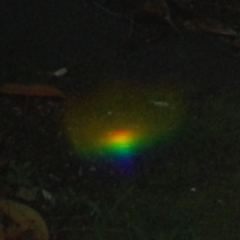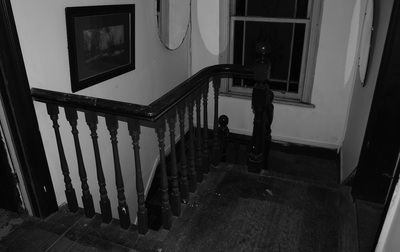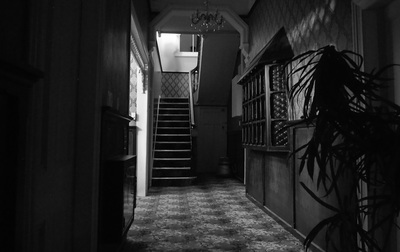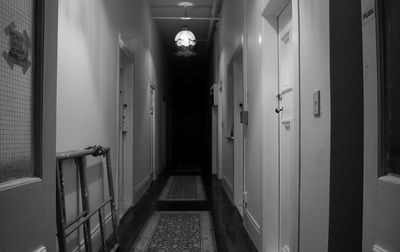An Update on Orbs: photographic anomalies in paranormal investigation - by James Gilberd. Some readers will have heard my talk ‘Photography and the Paranormal’ at Paracon Australia 2015. You may have been one of the people who came up after and said, ‘I’m really glad you explained orbs in that way,’ or you may have sat politely and perhaps ground your teeth a bit. Thing is, not everyone wants to hear what may be a rational explanation for something they genuinely believe is paranormal. Likewise, I don’t much like it when lazy skeptics dismiss possibility of ghosts with pat, armchair explanations; it’s just this / it’s just that / it’s all in your mind / you’re totally wasting your time even bothering to look; because I think they’re being dogmatic, conventional-minded, and may well be missing something really, really important. (Not all skeptics are like this, but that’s another topic.) Truth is, I am a skeptic when it comes to photographs, but at least I take the time to look closely at each photo, ask questions and remain open to the possibility that there is something there. So, when (or if) you read this article, please don’t regard it as dogma. The purpose of it is to help to understand some of the common photographic anomalies that are easily mistaken for paranormal phenomena. Also please note that if I give an opinion on a photo, it is just that: an opinion. Interpretation and meaning is ultimately personal. If your uncle recently passed away and an orb appears just over his head in the last photo ever taken of him alive, who am I to tell you it’s just a bit of dust? Dust orbs
Changing technology What will surprise few of you is that the majority of the more recent photos that show suspected paranormal phenomena (ghost apps aside) have been taken on cellphone cameras. With this change in the prevalent camera technology has come a shift in the frequency and the way certain anomalies appear. The photographic principals of phone cameras are the same but the scale of the optics is much smaller than even the most compact of dedicated digital cameras. Depth of field is so great that objects extremely close to the lens, or touching it, are rendered in the photo. Try placing a hair across the lens of a DSLR camera; it won’t show in the photo at all. Then try it with your phone camera (with the LED flash on) and woohoo – ectoplasm! Also, due to the flat profile of the cellphone and the way it’s usually held to take a photo, there is no shielding of the lens from stray light, so lens flare has become a more common factor in anomalous photos. Lens flare occurs when light which is not part of the image, and/or any bright light source within the image area, gets into the lens and interferes with the camera's ability to render a clear image of the scene. Flare orbs If you look at the surface a camera lens at a certain angle you’ll see its anti-glare coating, which is slightly irridescent, like oil on water. It’s similar to the coating on modern eyeglasses, and it turns out that lens flare that manages to penetrate the coating usually gets coloured by it. So what we’ve been receiving by email recently have been little round, coloured orbs (often green) that look a bit like dust orbs, but aren’t. (Dust orbs require flash, flare orbs don’t.) They occur mostly when there’s a very bright light in the photo, maybe the sun or the moon, or a streetlight or naked light bulb. The Flare Orb (we’ll call it) is often in the opposite part of the photo to the light source, so if the sun (say) is in the top left of your photo, look for a flare orb on the bottom right. You can usually draw a line through the approximate centre of the frame to connect the two. Flare orbs stand out best when there’s a dark area behind them (see examples, cropped in from some photos we've received), but still occur in light areas – you just won’t notice them, for the same reason you can’t see the stars during the daytime. Above: Flare orbs from different photos, different cameras, but all with the sun low in the sky, within the photo frame or slightly outside it. When strong light strikes a lens with some dust on it, or with a greasy fingerprint (as often happens with cellphones) things can really get crazy, with the flare pattern spreading across the lens and doing bizarre things. And when the phone applies digital sharpening to the image data, then compresses it into a much smaller JPEG file for transmission, more stuff happens to the photo. It’s hardly surprising that orbs, lens flares and other anomalies can end up looking like extra-terrestrials or giant floating amoeba and scare the crud out of people. See 'Alien Bug in New York' on this page. ExperimentThe best way to learn to recognise these photographic anomalies is to try to reproduce them for yourself with your own cameras. I spent a while trying to get little green flare orbs like the ones people sent in, but found that none of my cameras would make me one. However they did produce their own versions; not in every shot, and only if I held my tongue right.
The benefit of understanding these anomalies by deliberately creating them yourself is to see what is normal and not paranormal. This is important if you’re involved in paranormal investigation, because it could help avoid that embarrassing situation where something is offered up as evidence of paranormal activity when in fact there is a perfectly natural explanation for the thing, and you end up with egg on your face (as has happened to me, and to most of us at one time or another). In the eyes of the scientific community, and even the general public, we in the paranormal field have some credibility issues, so the less egg we end up with on our collective face, the better. The is really strange stuff out there: unexplained stuff, unaccepted stuff, paranormal stuff, and we all want to find it, experience it, document it and try to understand it. Photography and videography are great tools for documenting and learning about things. Cameras are constantly improving and are increasingly able to show things well beyond the range of human vision, and they’re becoming cheaper to obtain and easier to use.
Despite finding that many paranormal photos probably have mundane explanations, I’m still excited about the uses of photography in exploring the paranormal, with the present technology and with what’s yet to come. I hope you are too. Keep at it, and if you capture something you don’t fully understand and would like a second opinion on, please email me and my team at [email protected] Further reading: Photography and the Paranormal (by the same author).
1 Comment
Each page of the NZ Strange Occurrences Society site now has a different black & white header photograph. But aside from overlaying text on the actual image, there's no way of captioning them, or of viewing the entire photo for that matter. So here they all are in one place, with caption info. All photos are by James Gilberd, except where noted as by Rob Wilson, the group's main photographer.
|
Ectoplasmic Residueis a blog by James Gilberd - leader and co-founder of Strange Occurrences. Views expressed here do not necessarily represent those of the Strange Occurrences team. AuthorJames Gilberd is an amateur paranormalist, writer and musician, and a professional photographer, living in Wellington, New Zealand. Archives
February 2021
Categories
All
|














































 RSS Feed
RSS Feed
